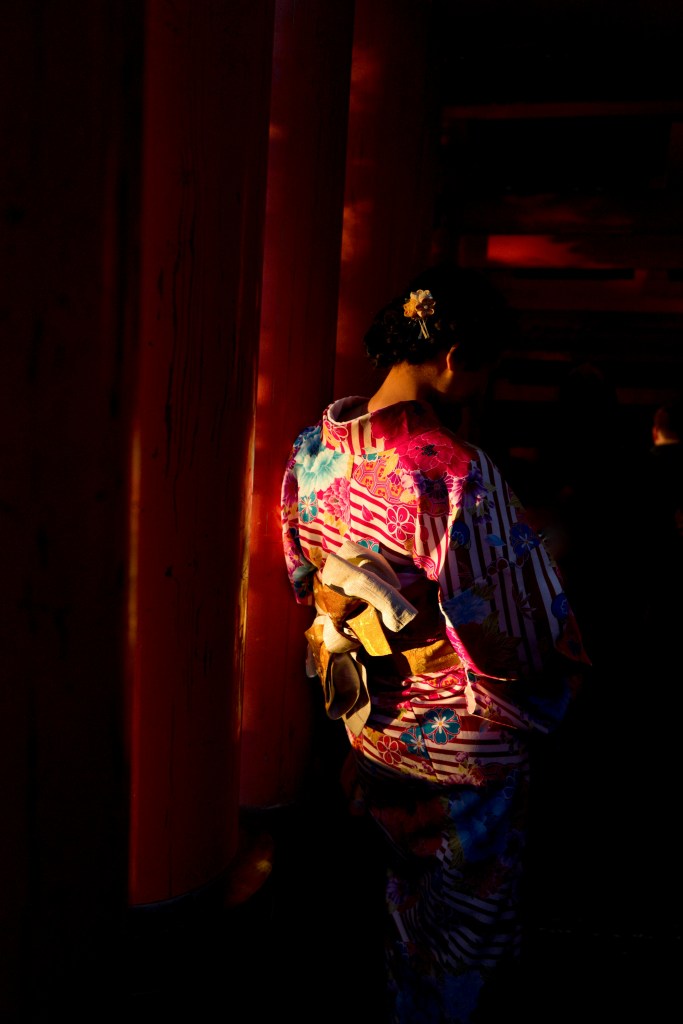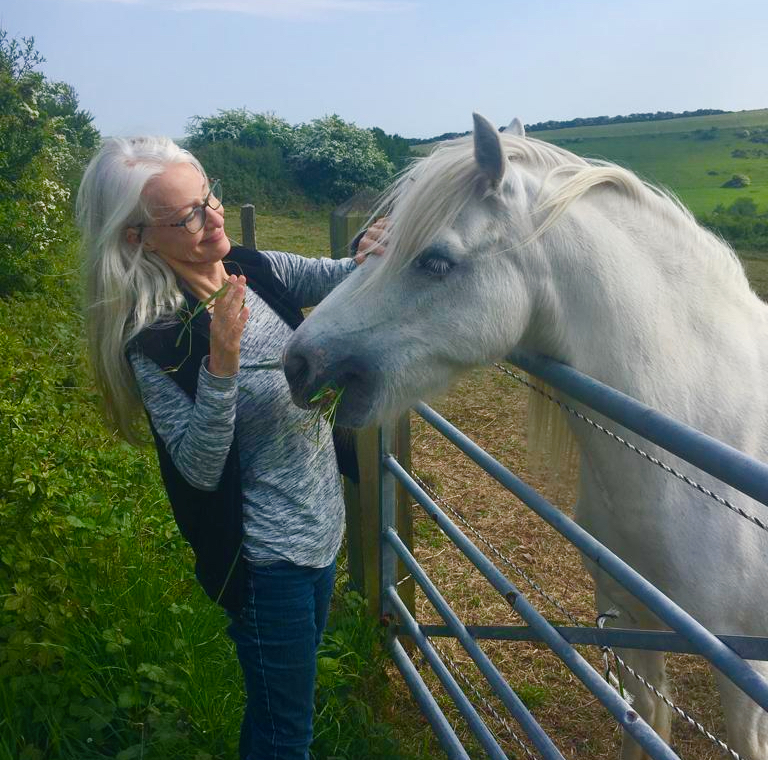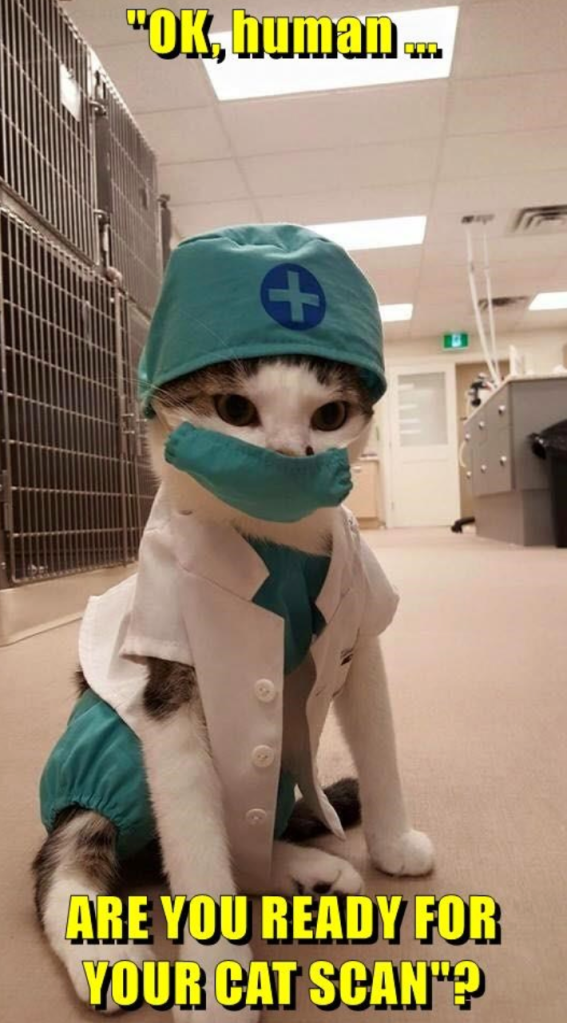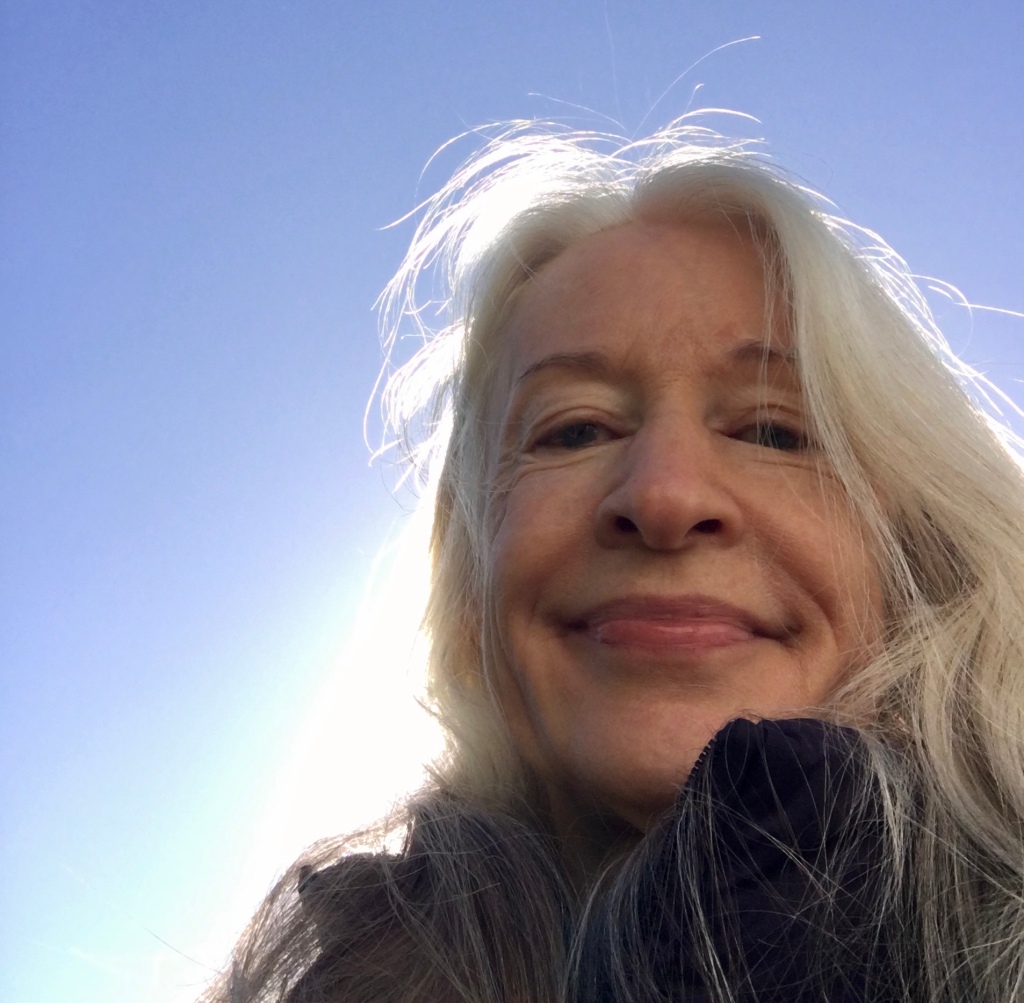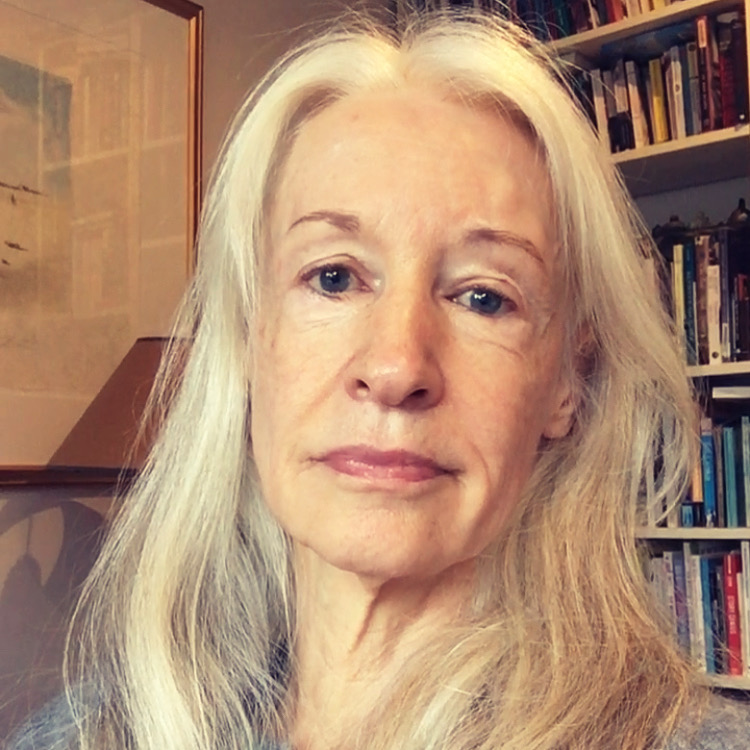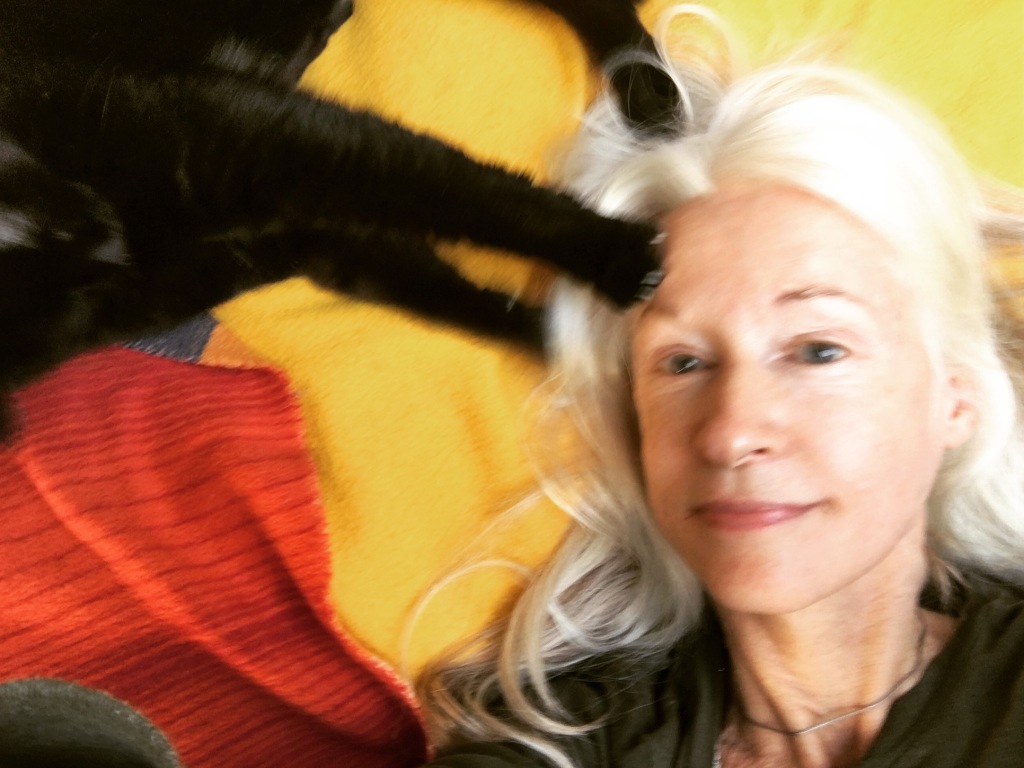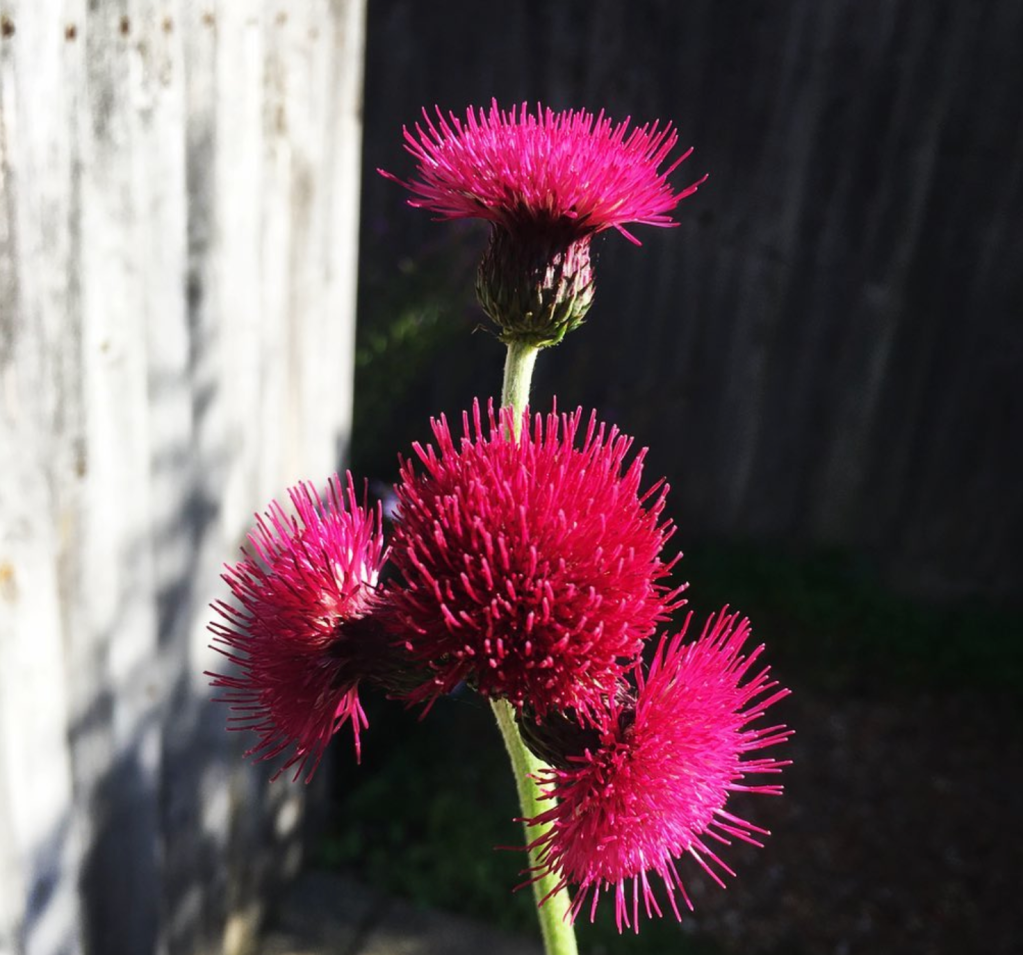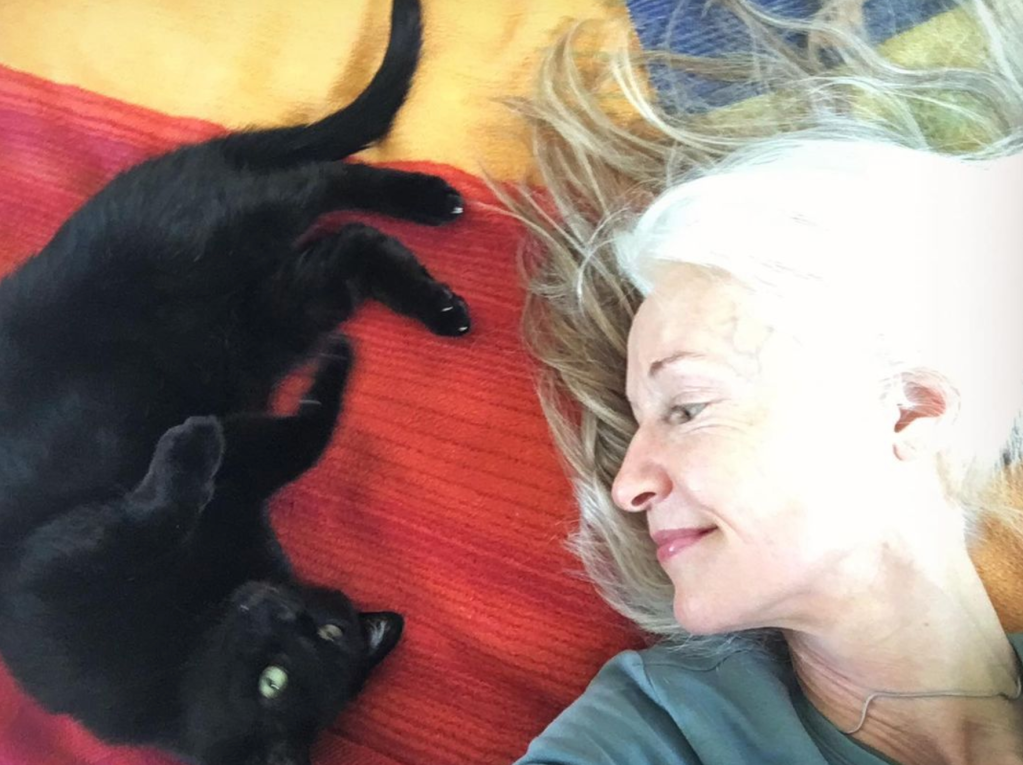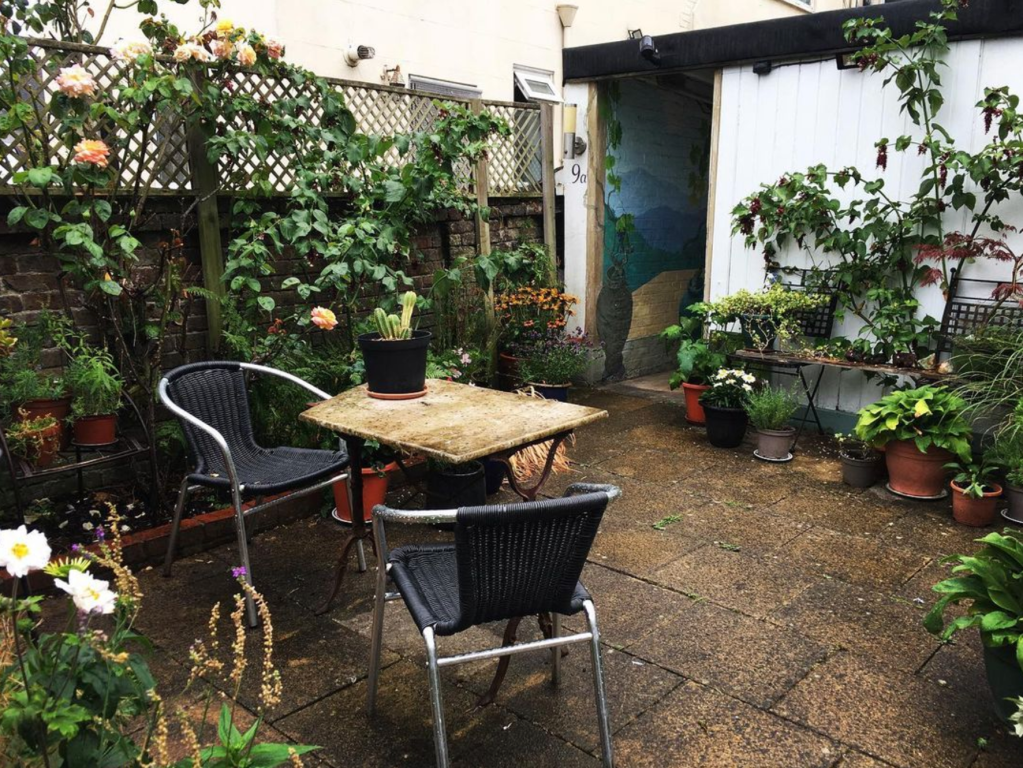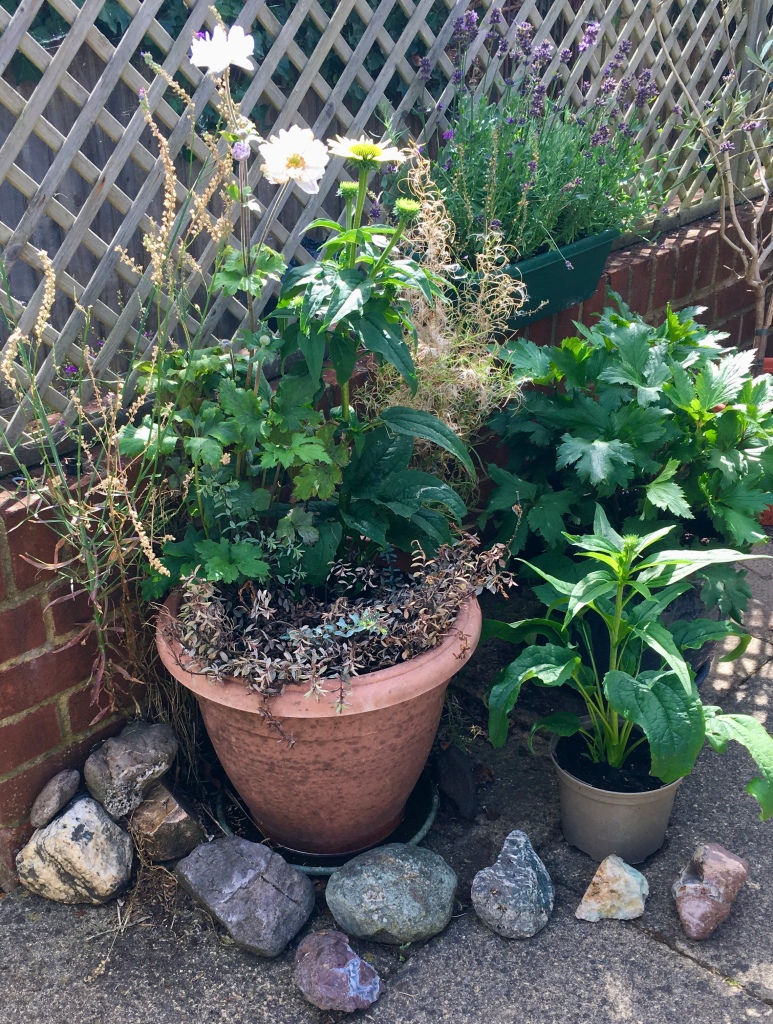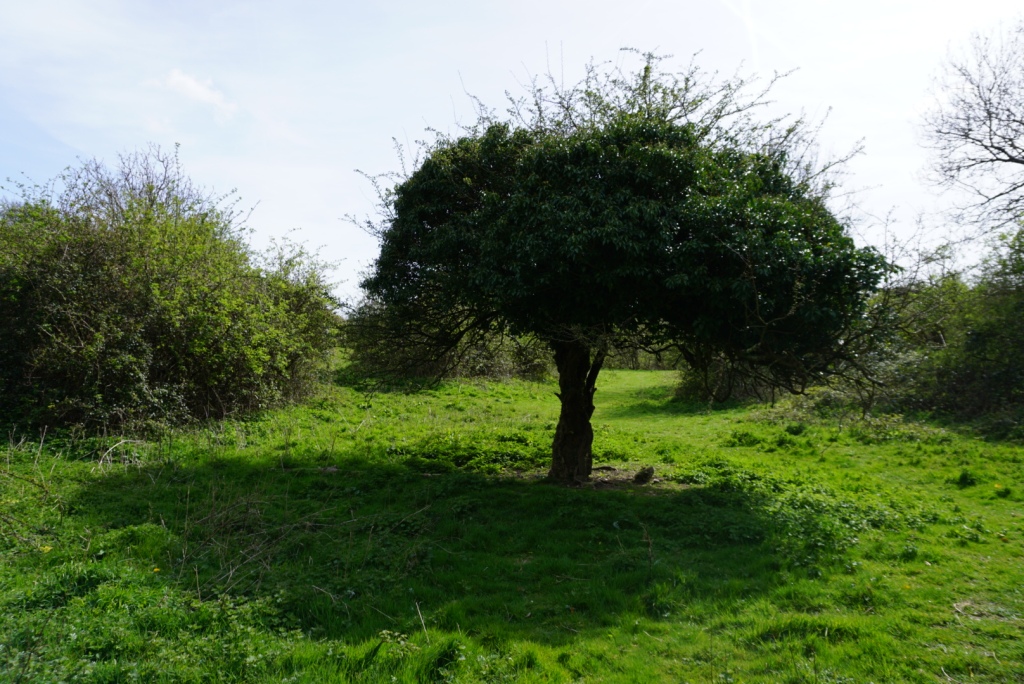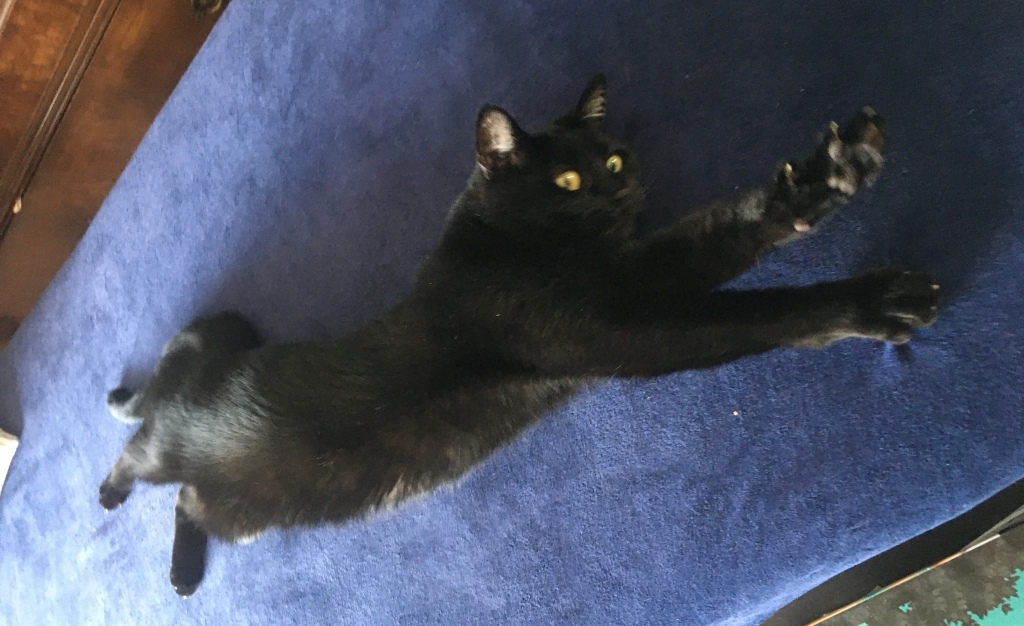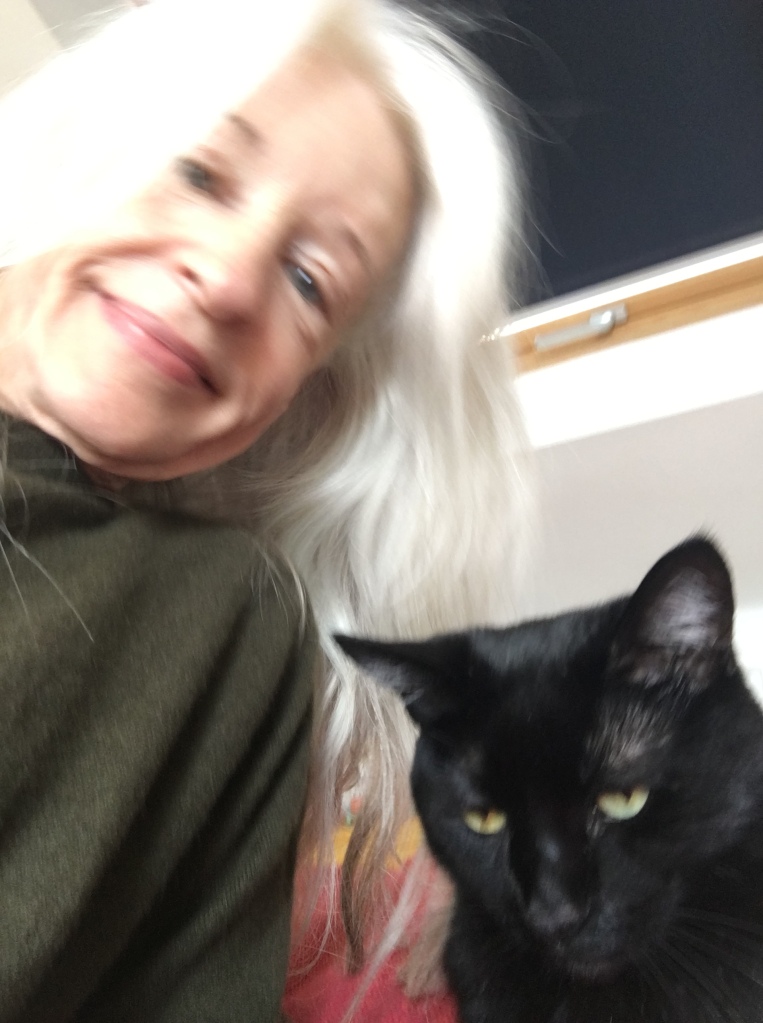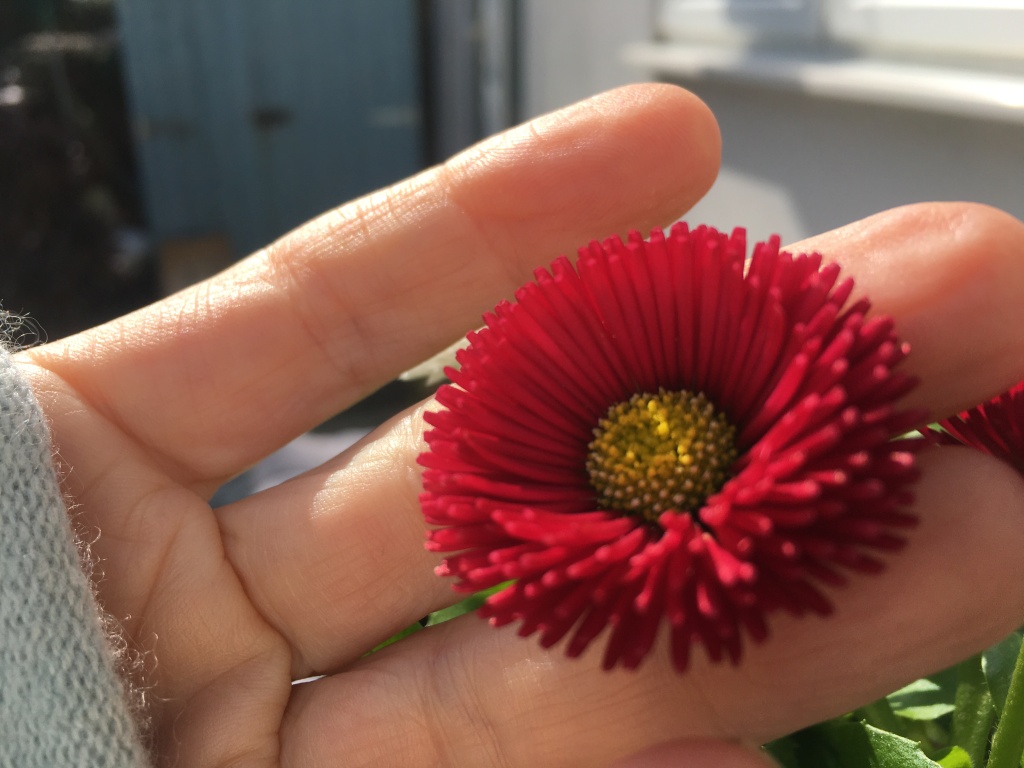Yesterday was a first for me, I had TWO pieces published in one day. One is a personal essay about my mother’s death, titled Now That You Are Here published by the wonderful Cutleaf Journal (the most money I ever received for a literary magazine publication!), and the second is Karaoke Girl which I entered into a little competition where you record yourself reading a flash piece, and apparently I’m shortlisted. I only entered last week. I’m not entirely sure how it works, if you like it and leave a comment (only if you DO like it), possibly it helps get the piece further in the competition! Or just click if you want to hear what I sound like…
I should say that these are not brand new stories. In fact the essay took NINE years to get published, turned down by far lesser (and non paying magazines), so it’s worth never giving up.
FINDING HOME
I can’t believe it’s been been five months since I wrote here. I don’t know where the time has gone. My various symptoms were really awful for a long time – the burning feet syndrome (most likely small fibre neuropathy), the nocturnal polyuria made for very little sleep, which in any case is never restorative. I was given a drug to help me sleep, but that gave me restless legs, which was almost worse than either of these, so I stopped taking it. I had an awful, endless viral infection in January, not COVID but a kind of cold or flu, the worst I’ve ever had. It caused a ticking sound in my head which got worse if I moved or even moved my eyes, and this was layered on top of my already horrible tinnitus. But it did pass, eventually. I still have burning feet and I still have to wee throughout the night, but it is better than it was. My pancreas is still not working properly so I have to take digestive enzymes with every meal and snack, and my hormones won’t settle down into something relatively normal. I’ve had weird heart arrhythmias and I’m still waiting to see a cardiologist about this, so too an NHS neurologist and rheumatologist to proceed with the small fibre neuropathy diagnosis. I did have an appointment with an NHS gastroenterologist, and I’ve had an abdominal CT scan for which I’m awaiting results. I’ve had brain and spine MRIs, which showed nothing out of the ordinary (other than the prolapsed disc).
About the prolapsed disc — my sciatic pain has varied from awful to completely manageable and back again, but mostly it is nothing like it was in 2021, not even close, I can’t tell you how grateful I am. I still take a drug for this, but I’ve reduced what I had to take in the early days. Overall I’d say most of my symptoms have eased, even if only a little. Again, I’m so, so grateful. But I still have a tiny window of energy available to me each day, no more than 3 hours usually. I still have severe, crushing exhaustion, and dry eyes and dry mouth and so on.
But….! I’ve had some really good days recently. My mental health is overall better than it’s been in many years – and it is this I mostly want to talk about because I’m going to ask for your help again.
I was long ago diagnosed with C-PTSD – complex post-traumatic stress disorder. I have never really known what to do with this – over the decades I’ve done different kinds of therapy and therapeutic approaches, and I’m sure these helped but I still have had breakdowns and periods of severe depression. And, as you know, after the drastic downturn in my physical health in 2021 I knew I had to do everything I could, both on a physical and mental level, to at least bring me some kind of ease, for otherwise my life as it was then was not worth living.
Thanks to so many generous people I’ve managed to do a lot about my health from acupuncture to seeing private consultants. I’ve talked about Rex Brangwyn, the extraordinary EMDR therapist I worked with for several months, and then early this year I started work with another therapist, Montseratt, someone Rex recommended who has a different approach. As soon as I saw her photograph on her website, I knew she was someone I had to work with. She’s a soul worker, mentor, grief worker, doula, childbirth activist, singer and of course, a psychotherapist. She and I do weekly sessions on Zoom, and 3 or 4 intensive in-person sessions that last all day. I’ve had 3 so far, and the last one was incredible.
I was able for the first time in my life to truly access the deep river of pain that lives inside me, that lives beneath all the dissociative behaviours I’ve learned to avoid the pain. I’ve always been frustrated that I could not access how it actually felt to be seven years old and survive a car crash that killed my father in Crete, and all the associated trauma that unfolded afterwards: my mother’s severe illness, living in a foreign country and so on, not having family or friends around for support. Not to mention my early teenage experience of being an unwitting/unwilling witness to my mother’s violent and overtly sexual relationship with her second husband. And all that followed: the years of bulimia, the suicide of a friend, the near death of my own second husband. I can remember how awful it was when I was older, but when I was seven? No. The traumas that followed just compounded my dissociation, my feelings of isolation, my coping behaviours (be strong, capable, independent).
In this last long session with Montseratt felt all of the pain, all of the grief. So deeply and so fully and so painfully it literally flowed throughout my body – for hours, and at the same time I experienced an extraordinary sense of compassion and love. Montseratt was with me the whole time, witnessing what I was going through, holding me, talking with me. At one point she said, “This is home.” The issue of not having a home has been huge for me all my life – not just because I have lived in so many countries, but because I’ve never felt grounded in myself, never really felt committed to living, to life. And when she said This is home, I could feel the truth of that. And afterwards, something shifted inside me. I’d felt the pain I’d been avoiding all my life, and I’d survived. Not only survived, but discovered within me a compassion I never knew existed.
After this session I had some days and hours of feeling better in my body than I’ve felt in years, actually healthy. And even happy!
And, the work is not over, I need to practise this self compassion on a daily basis. And after this long session I knew I needed to do another one. The original idea was to only do three, but my second session was not fruitful, so it felt clear to me that more is needed to truly ground the work within me, or possibly to access other emotions I’ve repressed (anger, for example, an emotion I so rarely feel I assume I am just someone who doesn’t really feel anger, but….). Montseratt brought it up too, that one more session like that would be really helpful.
But these long sessions are expensive – not relatively, but it’s a six to seven hour process, all in one day and Montserrat is completely focussed on me the entire time. I need help to do this, and as always as I write this, I feel… awkward. I have no expectations, I trust that somehow it will be possible.
If you can help, that would be amazing. If you can’t, thank you so much for reading this far. It’s a support just knowing you have, that you are there.
Here is the link to the fundraiser: Can you support my journey to mental and physical recovery?
Previous blogs of mine on my physical situation:
Doctor, Doctor
44 Weeks
Still Suffering
ROCKS AND FLOWERS
Feeling Normal
The Real Story
The Unendurable, Part Two
The Unendurable
IT’S NOT COVID
More Things I Don’t Want To Talk About
On Being Invisible
LABYRINTH
Delighted to have a story published in the third edition of Atticus Review. This is a piece of creative nonfiction, perhaps not an easy read, but I’m proud of it. It’s a lyrical delve into my own psyche and some of the events that happened to me in my childhood. In this issue Atticus Review states: we look deeper at the role of language in shaping our lives, our relationships, and our world. We have love languages, expressions of grief, ways of processing trauma and creating hope. As an access point, language gives shape, and is shaped by, our sense of self and our sense of community.
Many thanks to editor Rachel Laverdiere for her help in polishing the story.
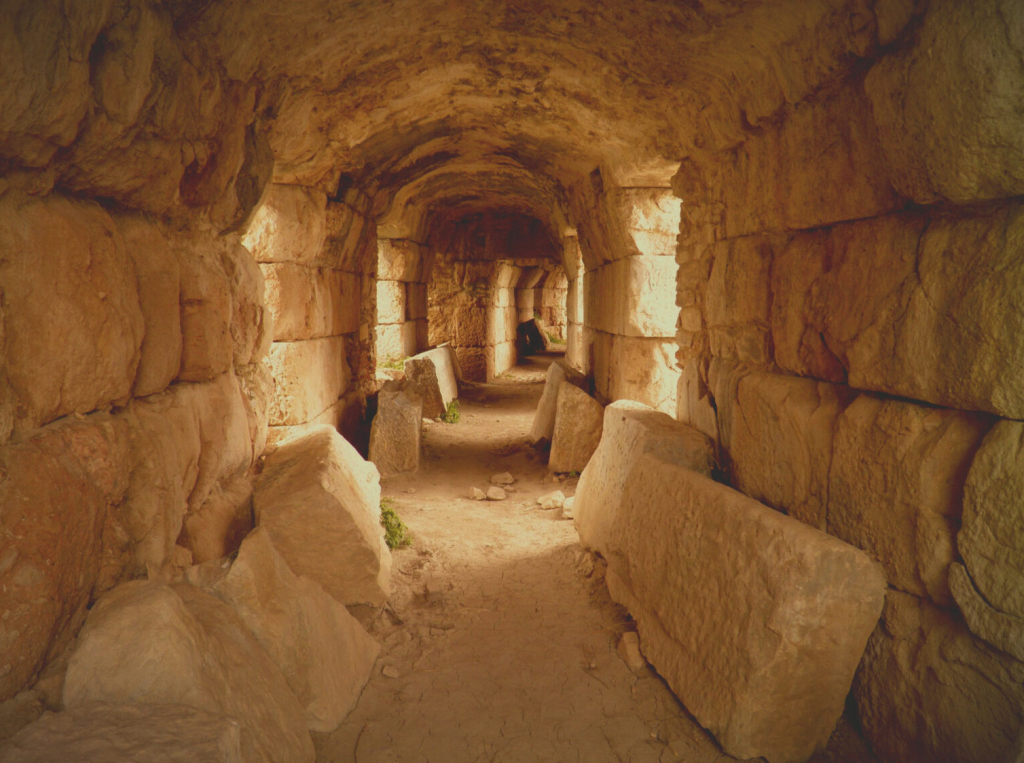
Photo by Carole Raddato, used and adapted under CC.
Doctor, Doctor
There was a doctor in France who told me my post viral fatigue symptoms were due to a problem with my shoulder and sent me to a physiotherapist. There was a consultant lipidologist in Ireland I was referred to, but she refused to talk to me because I was hesitant about taking statins. A doctor in Canada who refused to look at the articles I’d collected on chronic tick-borne conditions and instead told me my problem was depression. The surgeon who almost had a temper tantrum during a consultation because I was feeling faint and needed fresh air. The doctor who neglected to tell me they had a specialist nurse in the practice for menopause and hormone issues, forcing me to go private. The doctor who didn’t like the sleep medication I was on and put me on another that is harder to get off, and has worse side effects. There was the surgeon who didn’t discharge me after an operation because he was too busy, and left me in the hands of a nurse who was unaware of what I needed to know in terms of my recovery. There was the doctor who insisted I had a thyroid disorder in spite of the fact blood tests were normal and gave me thyroxine which made my hair fall out.
The list goes on. But then there was the doctor at university in England who gently indicated my mouth and said, We’ll need to take care of that. I’d had a sore there for months because I was bulimic, stomach acid splitting open the tender skin. The doctor slid open a drawer and handed me an ointment that cleared it up in a few days, and without me asking referred me to an eating disorder specialist. There was a doctor in Ireland, my mother’s, who listened quietly to my endless story of ill health, looked at me and said, We’re going to get to the bottom of this and I knew he meant it. Sadly I couldn’t be his patient because I lived elsewhere.
I have good doctors here in Brighton. They do what they can, but they are not specialists, and they have little or no time, and it’s hard to actually get a face-to-face appointment. They do refer me to specialists but it takes a year or more to see anyone, unless it’s a cancer scare (and I’ve had a couple of those). I’m on the NHS list to see a gastroenterologist, a rheumatologist, a neurologist and a cardiologist.
In the end I gave up waiting for two of these, and thanks to the extraordinary generosity of so many who donated to my fundraiser, I’ve recently seen a private rheumatologist and a private neurologist.
I saw these doctors at two different private hospitals, all quiet and ease flowing the corridors. Free coffee and tea and biscuits, nice comfy chairs. Lots of nurses and other staff to assist with whatever is needed. A universe away from the usual hospitals I’ve had to go to.
The rheumatologist, Dr. Vijay Hajela, had the best bedside manner and I left the session feeling generally better about things. I went to him as I have most of the symptoms of Sjögren’s syndrome. He listened closely, read all the information I’d brought to him, and looked not only at the symptoms that were specific to his speciality, but the wider picture. Essentially he does not think I have primary , but possibly symptoms that are secondary to another autoimmune disorder or a ‘sicca’ syndrome. He’s ordered serum ACE, IgG4, Immunoglobulin profile and ENA bloods. He feels I have an issue with my central nervous system, hence the multi-organ/body symptoms. Possibly neurological inflammation/ sensitivity. He made a medication suggestion regarding this. He was quietly shocked that I hadn’t had a pancreatic scan yet given the diagnosis of severe pancreatic insufficiency in the summer (another specialist I’m still waiting to see), and pressed for this.
The neurologist, Dr. Dennis Chan, couldn’t have been more different in manner, but he wasn’t arrogant (unlike the private surgeon I saw last year), just very comprehensive, methodical and specific with his various investigations and questions. He took a full history and then poked me everywhere with a pin; told me to walk as if on a tightrope, and did all those finger to nose tests you see on TV. I felt a bit like I had an incredibly efficient robot doctor, but I knew I was in good hands!
Dr. Chan thinks I most likely have small fibre neuropathy, which is what I thought. He has ordered a variety of tests to exclude other possibilities, including an MRI of the spine. If these don’t show anything untoward, then I will need to see a peripheral neurology specialist. He also works for the NHS and was able to order the MRI on the NHS. Probably you will get an appointment in January, he said. Or maybe February, he added with a disappointed frown. I could hardly believe it – I knew I’d normally have to wait several months or more. Later, I realised I’d forgotten to ask him about further investigations regarding various ‘head’ symptoms I have (sense of pressure in the head, extreme tinnitus, etc), and so I emailed him to check. I promptly got a call from his secretary saying he’d be happy to order a brain MRI.
A few days later I get the appointment for both, January 9th. I’m still in shock at the speed of this. I consider myself so very blessed to have been able to access these two doctors, for the choice I made, and for the support I’ve received to see them. I think about all those who haven’t been able to do what I have, who have to wait a year or more to see someone in a crowded and confusing hospital where you hear weeping and cries of pain. The exhausted nurses rushing about. They will be striking this month and I can understand why, and I wonder how it will be for those who have to visit an NHS hospital during that time.
And me. There’s more to do, and I’m still suffering physically, but knowing there are doctors like with Dr. Chan and Dr. Hajela on my case give me hope. I just wish they were easily available for everyone.
Previous blogs of mine on my physical situation:
44 Weeks
Still Suffering
ROCKS AND FLOWERS
Feeling Normal
The Real Story
The Unendurable, Part Two
The Unendurable
IT’S NOT COVID
More Things I Don’t Want To Talk About
On Being Invisible
A RUBY DEAL GONE TERRIBLY WRONG – THE EXTREME HOLIDAYS PODCAST
My mad adventure in Sri Lanka in Thailand in the 80s when I bought a handful of rubies in the hopes of making my fortune is live! I’m interviewed by award-winning writer, podcaster and adventure traveller Ruth Millington for the third season of her Extreme Holidays podcast.
I am considering writing a memoir based on my experience, so I’m very excited to have the tale begin its journey as a tale told rather than written, with many thanks to Ruth’s capable hands. It’s a story without an ending and Ruth and I are hoping listeners will give their opinion about what actually happened…
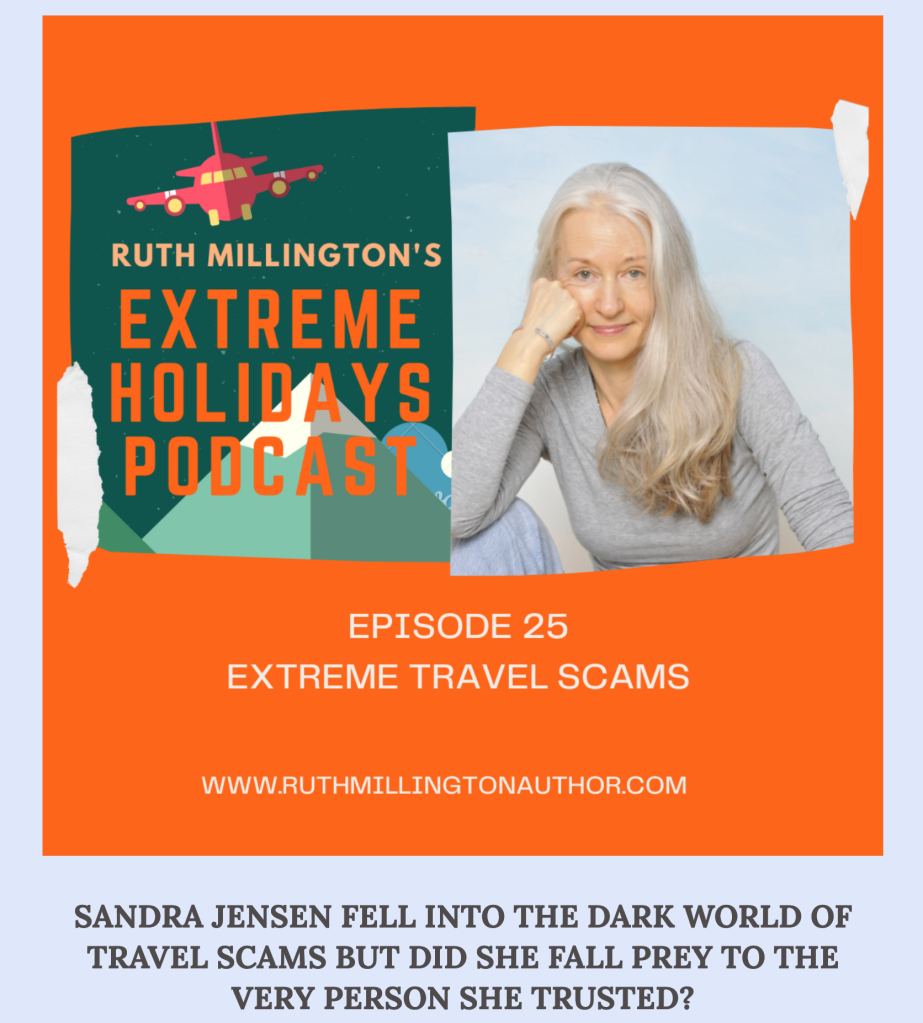
44 Weeks

I sit here, wondering how to write. What to write. My story feels endless, and therefore boring, I’m sure. 44 weeks, at least in pregnancy, is post-term, past due. In NHS terms, it’s how long it takes to see a specialist.
I know you all want me to be better, I want me to be better! And I am, in so many ways, thanks to your support. But I still have some ongoing – and some new – symptoms that severely affect the quality of my day-to-day life. At times I feel utterly desperate, and quite useless as there is so little I can do, for myself and for others. I glance over Facebook and the hundreds/thousands of stray animals in Bosnia needing help, help that I would normally be able to assist with, but no longer.
And I want to stop defining my life by my physical situation, and I know this is possible, even if the symptoms don’t go away. I just need help, solid, professional help.
My main issues are:
Burning feet and hands at night, waking me up constantly.
Blurred vision every few days or more, so I can’t read.
Excessive dry mouth and dry eyes.
Fatigue, of a new type, for the past 6 weeks. I am constantly exhausted. I get up, eat /shower, then I lie down for an hour or two. I get up, can manage an hour or two maximum doing a couple of things, and then I have to lie down again. By then its time for supper, and then for bed. My ‘useable’ hours are shorter than they’ve ever been other than last year when things were really bad.
My GP has done all they can and now I’ve been referred to three consultants: gastroenterology for my ‘severe pancreatic insufficiency’; a neurologist for the blurred vision and burning feet, the latter could be small fibre neuropathy and this can be progressive – moving up the body, and a rheumatologist for the dryness and exhaustion, to see if I have something called Sjogren’s Syndrome. This too can have severe complications, and needs – but rarely gets – early diagnosis.
So, I have been told it will take 44 weeks to see any of these specialists on the NHS. That the ‘normal’ wait time is in fact about a year. The NHS is broken, my GP tells me. Not comforting words.
I am getting used to physical suffering, more or less, but if there are things that can be prevented by early diagonsis, or at least actually diagnosed so I know what is going on and not spend my few available hours searching the internet or checking support groups for information, it would make a huge difference. Perhaps I could start thinking about other things than my health. Perhaps the bags under my eyes might lessen. It took me a while to have the courage finally post a photograph showing how I ‘really’ look…
I really don’t think I can’t wait 44 weeks.
So, I would like to make two private appointments – one for a neurologist, and one for a rheumatologist (my gastric symptoms are the least problematical at the moment). I am hoping if there are further investigations needed, they can refer me back to the NHS, as this often is possible.
The neurologist is Dr. Dennis Chan, I have chosen him on the recommendation of others who have seen him, but also because he is heading up a Long Covid cognitive study and as I essentially have a version of LC, this might work in my favour. I will also ask him about other neurological related symptoms I have.
His fee is £280.
The rheumatologist is Dr. Vijay Hajela, who comes *very* highly recommended by my doctor and others.
His fee is also £280.
I’m starting a new fundraiser, to try to cover some of this – the old one feels messy and not specific enough. Again, asking for help – financial help – is very difficult. I have no expectations. The tiniest amount helps. And if you have read this far, I’m deeply grateful.
Fundrazr link:
Please help me shorten the 44 week time to see a neurolgist and rheumatologist
Previous blogs of mine on my physical situation:
Still Suffering
ROCKS AND FLOWERS
Feeling Normal
The Real Story
The Unendurable, Part Two
The Unendurable
IT’S NOT COVID
More Things I Don’t Want To Talk About
On Being Invisible
Still Suffering
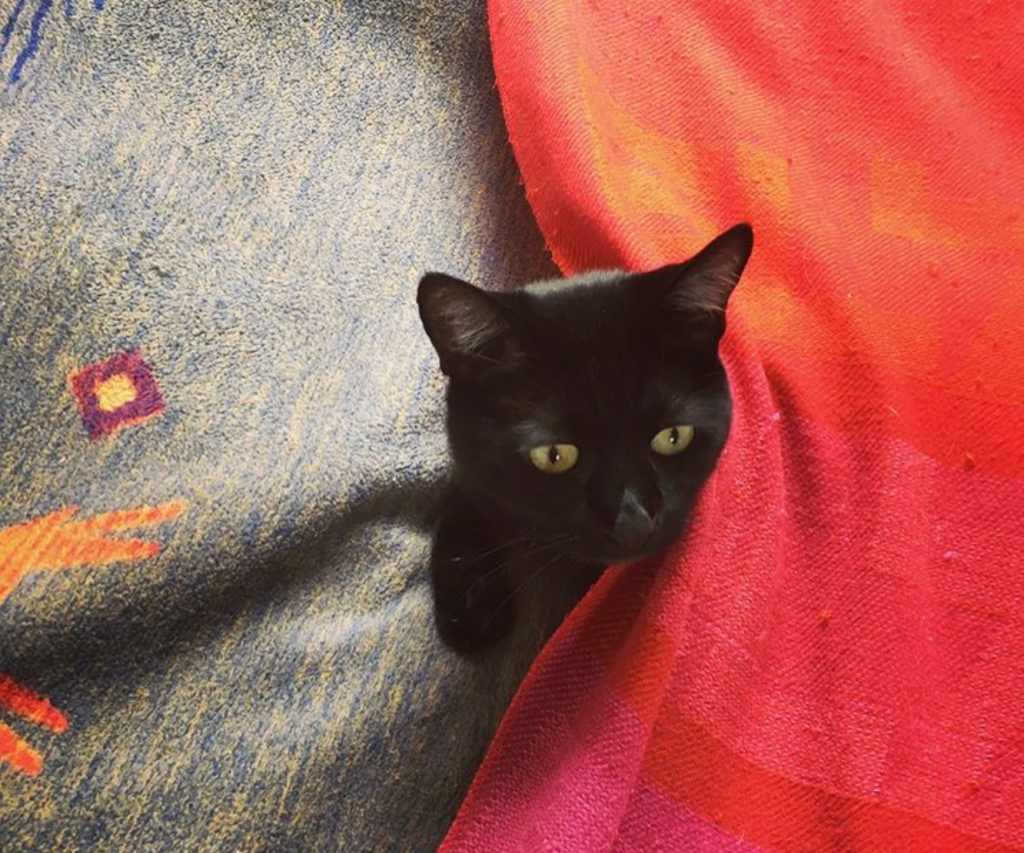
It’s eight months since I wrote The Unendurable, eight months since I created a fundraiser to help with my healthcare costs. I’m still here, I’m still suffering, although I am not, as I was then, at the complete end of my tether. Thanks to the generous support I received I’ve been doing ongoing trauma work and this is giving me a new-found inner strength, unwinding the programming I’ve had nearly all my life: “I’m alone” “There is no help”. I don’t think these things now.
Nevertheless I am still suffering physically, mostly from my adverse reaction to the AstraZenica vaccines and each day is a challenge, much of it spent lying down. I did hope to be in Germany now, seeing friends, but I just don’t feel well enough. My sciatica is manageable for the most part, but has gotten about 20% worse in the past 10 days, I’m not sure why. I try to stay positive, something that is easier these days, knowing I have so much support. I know the title of this blog isn’t what anyone wants to hear, let alone me, so I’m grateful if you are here, reading.
I still have multiple weird symptoms. It’s difficult to explain them all. In fact I had my first Twitter spat recently when someone I’ve never heard of said, “I am starting to write a paper on vaccine injuries. Which symptoms are you suffering?” I thought this sounded a bit odd, given his handle was about a sheep farm, and when I said so I was swarmed by his acolytes giving me good ticking off. Nevertheless it did make me think a simple diagram would help when people ask me what’s going on, and I’m taking, quite literally, a page out of Caroline Pover’s wonderful book “Covid Vaccine Adverse Reaction Survival Guide”. I’ve kept the book title/author in the image, but the symptoms are mine.
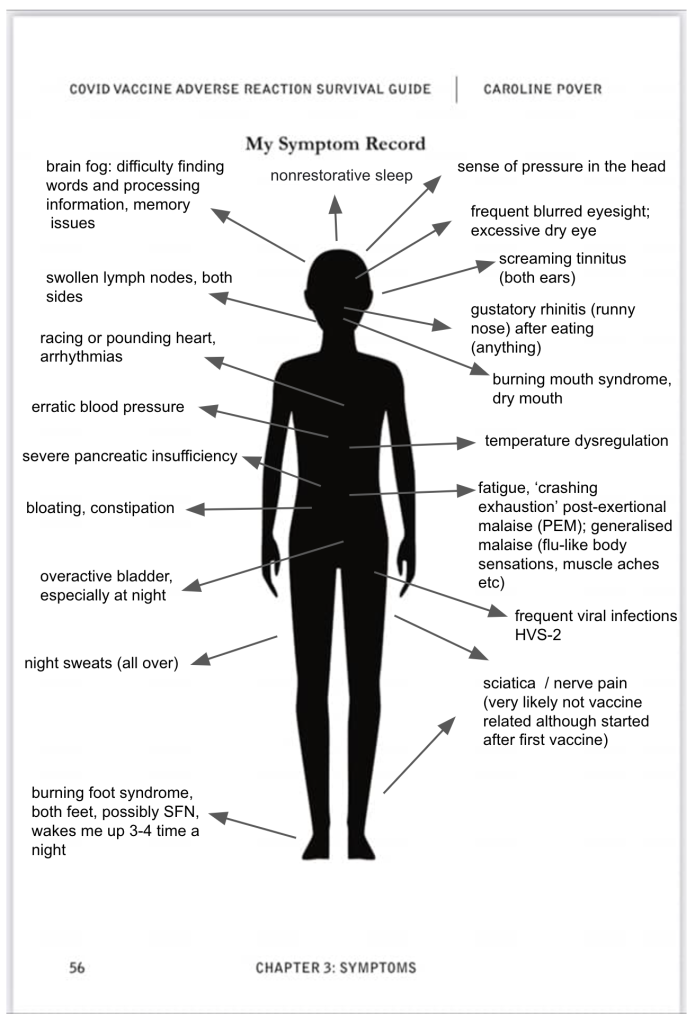
The funds raised by so many generous people are beginning to run out and I’m sending out my fundraiser into the world again to help me continue the treatments that already give me some relief, and perhaps there are others out there that I can’t even consider due to cost – HBOT for example, or a therapy that has helped many with Long Covid and post-vaccine-syndrome, but is only available abroad. Also possibly seeing a private neurologist as I have a 44 week wait for proper diagnosis of could be a progressively worsening condition (small fibre neuropathy). And, I still haven’t seen a gastrologist though it was two months ago I was diagnosed with “severe pancreatic insufficiency“…
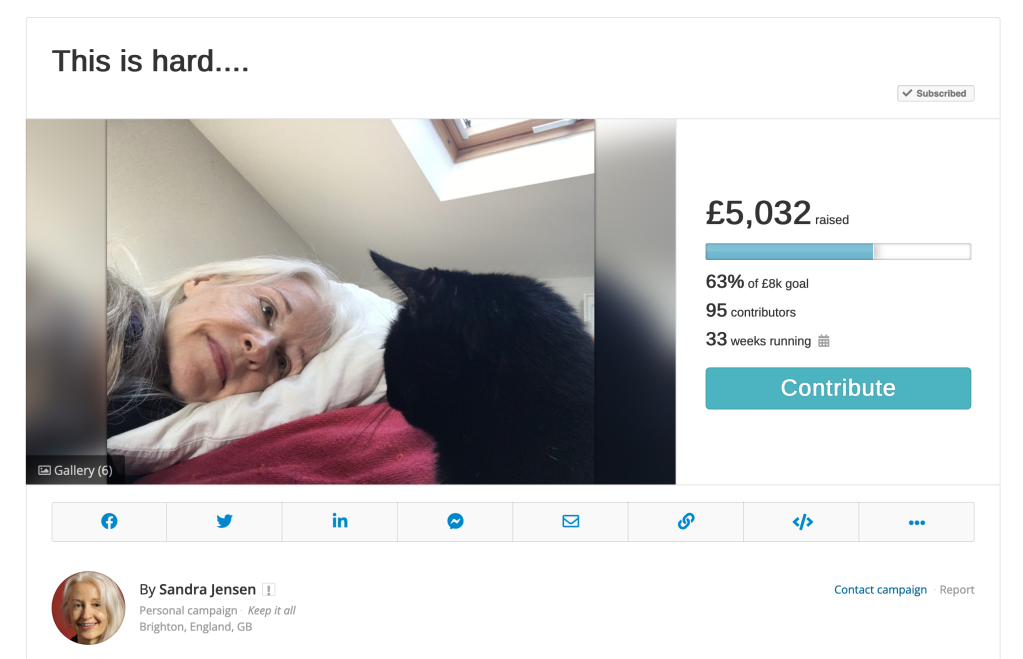
It’s still hard for me to do, still hard for me to ask for money, and I have no expectations. And if you do donate, I thank you from the bottom of my heart.
Previous blogs of mine on my physical situation:
ROCKS AND FLOWERS
Feeling Normal
The Real Story
The Unendurable, Part Two
The Unendurable
IT’S NOT COVID
More Things I Don’t Want To Talk About
On Being Invisible
ROCKS AND FLOWERS

Rex coiled a thick rope along the wooden floor of the treatment room, dragged out three plastic bags from a cupboard. One bag was full of large rocks, the other full of smaller rocks, and the third full of artificial flowers.
‘The larger the rock, the bigger the trauma,’ he said. ‘Flowers are for positive events in your life.’ He placed a bouquet at one end of the rope. ‘That’s for your birth.’
I did the rest: placing rocks and flowers along the rope, the rope being the timeline of my life. As I did this, Rex wrote down on a sticky note a one-line description of each event. I wasn’t to enlarge too much, I was creating an overview, a way to see patterns and themes that might affect my thought processes, my feeling about life in general. For me this has always been clear: life is unsafe. There is no one to be there for me when I’m in trouble. But I discovered much else. It took three sessions to complete, normally it would take two, but there were just too many events it was almost laughable. After I’d finished each session, Rex photographed everything, so he could put it in a spreadsheet for me to tweak.
It was an extraordinary experience, the rope and the stones and the flowers, a piece of art, really. The act of placing them along the rope a kind of performance art, even. And to have someone witness, hear, ALL of my life, in that way, well, I have no words really. And although there were so many traumatic events, I felt a kind of awe, that I’d gone through all this. That this was my life.
‘It has to amount to something,’ I said.
‘You’re a writer,’ Rex said.
In fact I’ve hardly written for many months, and I’ve not blogged about my health since April. I’ve kept waiting for the moment I could say I’m doing great. That all the sessions and the PEMF mat so many generous people have contributed towards are finally healing me. I wanted to say, I feel so WELL.
I’m better than I was. And, I’m not well. I realise I only started this particular journey in February. Seven months. I’ve been seriously ill with post-vaccine syndrome since March 2021, in extreme sciatic pain for nearly a year, and ill with an ME/CFS type illness for nearly three decades. Healing takes time.
On the emotional side, I see Rex every two weeks for trauma / EMDR therapy. It often feels boggy and difficult and painful, but it’s still very early stages and for someone with a history of complex trauma, certainly there are no overnight miracles. And Rex has a real gift, is a gift, a gift – a flower – that has been given to me, by all those helping financially.
On the physical side, there’s no question I’m in a better state than I was in February when I wrote The Unendurable. I do not have excruciating pain, just ongoing discomfort, sometimes low-grade pain. For this I am truly grateful. I’m still on morphine patches and still taking meds for nerve pain. I’m still having weekly acupuncture sessions and cranial sacral sessions every two weeks. I lie on my PEMF mat twice a day. All of these things are helping, I know they are.
The resurgence of hot flashes has abated, instead I have burning foot syndrome, most likely small fibre neuropathy (still to be diagnosed, but quite common in vaccine injury) waking me up every two hours in the night. I asked the doctor to precribe a capsaicin cream (basically chilli pepper), and this does help (I thought it might, given cayenne pepper eased my burning mouth syndrome in 2021 – you couldn’t make it up, could you!).
And I am frequently unwell, with viral type symptoms, possibly Epstein Barr flare ups. I haven’t returned to my pre-vaccine injury baseline. Some days I’m out for the count, feeling truly grim. Every day I have to lie down for an hour and a half or more, this in addition to the time I spend on the PEMF mat. I get up late, go to bed early. By nine at night, the pressure in my head, the ratcheting up tinnitus is so unbearable I basically swallow sleep meds and wait for darkness to take it all away (not to mention the sensation someone has taken a tiny vacuum cleaner to my tongue. No matter how much I drink, it gets dryer as the day goes on).
What else? Brain fog is bad. I mix up or lose words, forget names, forget what I’m supposed to be doing. My eyesight still blurs for several days in a week, so much so I can’t read emails or text on my iPhone, or even subtitles on the TV screen. (If you want to know more about basic ME symptoms, much of which these are, here is a helpful quick look guide).
And I’ve just received two worrying test results, taken because I’ve been having uncomfortable digestive issues for the past 6 weeks. I’ve now been fast tracked for a colonoscopy to screen out bowel cancer. And on Wednesday, as I scrolled my phone on the bus, on the way to have a reiki session with someone a friend recommended (Carly Steadman) I learn that another test result indicates ‘severe pancreatic insufficiency’. Googling my results was not uplifting. Worst case scenario is pancreatic cancer – which I doubt – best case? I’m not sure. Supplementation with enzymes, dietary modification. I’m still waiting to speak to my doctor. Or perhaps my pancreas will heal by itself, like the thyroid goitres that popped up (!) earlier this year, and then disappeared. I hope so. But I freaked out when I saw that test result. Yet one more thing to contend with.
I can only bless my friend (a fine healer in her own right) for suggesting the reiki session. The timing was perfect. Carly is a special kind of angel and she’s someone who has been through similar health issues as myself. I felt eased after the session and perhaps more importantly, that I’d met a kindred spirit. Another flower.
I’ve also joined an incredibly supportive vaccine injury advocacy group based here in the UK, called UK CV Family. We’re not moaning about our symptoms, we’re mostly looking to raise awareness so that vaccines can be made safer, that the Vaccine Damage Payment Scheme is actually taking us into consideration, as in many other countries. There needs to be more transparency in general, and scientific studies done to find out why some people react so badly. The mainstream media does not want to touch this issue – or has been told not to – but slowly more and more information is coming out.
Perhaps the biggest flower of the past four months, was going to Lesbos. It was touch and go whether I’d be well enough, but I decided I had to, either way. My partner, David Crean, held a Body Resonance Goddess retreat in the beautiful Milelja Retreat Centre near the little town of Molyvos. Twelve women attended. Exquisite women, inside and out. I participated in most of the meditations and sharings. I felt so loved, held, appreciated and seen. And I was in Greece, land of my heart. The food at the centre was incredible, not to mention the surrounding gardens. I would pick fresh mint and rosemary every morning to make tea; at dusk the mimosa trees filled the air with the most exquisite perfume. Bliss.
Yes, I was exhausted most of the time. Yes, I was sick, for at least two of the ten days. But it didn’t matter. I didn’t spend any time on my computer researching my symptoms and illness, I stopped scrolling my phone endlessly. There was too much beauty all around, nothing else mattered.
When I returned home I didn’t have a massive relapse (remarkable given the awful journey home). In fact for about a week, I felt truly myself. A feeling I hadn’t had for…? Years. But it passed.
Once again I understood I need community (and not just any community), I need nature.
Is this possible? David and I are still very much involved in Heartward, a group of like-minded people wanting to build an eco co-housing community in this area (there’ll be a zoom meet-up in early September to find out more if you’re interested). And, this will take time. Until then? I do what I can.
I found a day I had enough energy to be interviewed by Ruth Millington for her Extreme Holidays Podcast (the episode will be up in the Autumn), she’s another kindred spirit and the whole experience lifted my spirits. The story is one I hope to write as a memoir.
And, in spite of not feeling well, of not being able to write or read really (too tired, too ill, eyes too blurry), I decided our much-neglected patio needed help. So I’ve been planting, little by little. It’s not a private space (a thoroughfare for the shop we live above), and it’s a hot little sun trap, so I rarely sit out there, but it’s lovely to see the flowers blossom, to dig my fingers into earth. I’ve mostly planted bee and butterfly friendly plants, and some herbs. My sciatica has suffered, but it takes me out of the flat, gives me something to think about other than my health.
My dear cousin Jenny visited from South Africa recently and she asked me if I would continue to fundraise. To be honest, it’s still really hard for me to ask for financial help. And if I’m to keep working with Rex and the others, I’ll need to.
Or perhaps I’ll sell my novel instead! It is this I want almost more than anything — my child, out in the world. In the meantime, I tend to my anemones; wonder how to stop snails eating my cosmos flowers. I wait for my sage bushes to grow large enough to start plucking leaves for pasta.
I place rocks around the base of some pots. I think of them as stepping stones.
Previous blogs of mine on my physical situation:
Feeling Normal
The Real Story
The Unendurable, Part Two
The Unendurable
IT’S NOT COVID
More Things I Don’t Want To Talk About
On Being Invisible
FEELING NORMAL
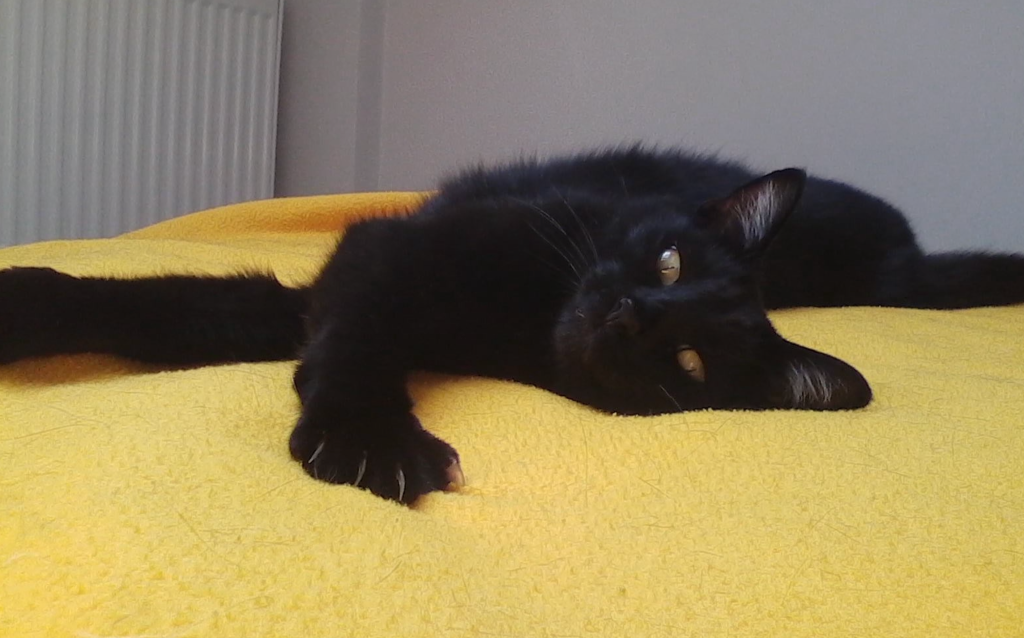
A couple of days ago I had an unusual thought. Unusual for me, that is.
I thought, I feel normal. In body and mind. I can’t remember when I last felt like this – or if I’ve ever had this thought before, given how abnormal I usually feel.
I do not wake in the night in pain, I do not wake in the morning in pain. To think that just a matter of two months ago I could not stand on my left leg first thing without excruciating pain, and by the end of the day I’d be weeping with the relentlessness of my suffering.
The change is miraculous. I’ve used this word before in recent updates, but it is. If anyone has experienced chronic pain, and then the lessening of it, they’ll know what I mean.
I’ve also talked about feeling gratitude, and I mean really feeling it. Over the years I’ve listened to meditations or been instructed by spiritual teachers to ‘feel gratitude’ – to find something to feel grateful for. I’ve searched in my mind and usually found something, although it has sometimes been a struggle. But it’s been a thought, not a feeling. I thought, I feel grateful for X, but in fact I didn’t really feel anything. I just knew it was good that X was in my life, or good that I experienced X.
Something shifted in the past weeks, where I actually feel grateful. I’m not thinking it. I’m usually lying down, waiting for sleep, and a sensation washes through me, a deep relaxation. It’s not joy – joy can be so ephemeral, almost unreal, perhaps a bit ungrounded. But this sensation is very real, and very grounded. It also doesn’t last that long, but I have a feeling it stays in the cells. It’s like I’m a plant dying for water, and now the rain has fallen long and deep into the soil to the roots. Perhaps it’s closer to one of those moments of spiritual well-being, of connectedness with all that is.
If you’ve been reading these blogs you’ll know the main reasons behind my gratitude – the shift in my pain levels, certainly, but also the support I’ve received, enabling me to step on this path towards healing–both body and mind.
I’ve done a lot of therapy in my life, of all kinds, from shamans to psychiatrists. I have a history of what they call complex trauma (exposure to multiple traumatic events). But, perhaps I’m finally getting the support I’ve really needed. It could be the multi-pronged approach I chose to help me with the pain: acupuncture, cranial osteopathy and EMDR, that latter of which I had my first ‘real’ session early this week. In fact, my therapist used a slightly modified version, using bi-lateral body movements as I re-imagine traumatic events (in particular recent ones – see The Unendurable and The Unendurable Part Two).
Even my therapist was surprised at how deep the session went. You process fast, he said. I’m sure this is because I’d already had several weeks of the other approaches, and perhaps also because of all the work I’ve done over the decades. I’ve also taken on board the fairly radical theory of back pain promoted by Dr. John E. Sarno.
And—and this is the news I really meant to write about—thanks to so many of you donating and to three dear, amazing friends covering what remained, I’ve had the PEMF mat for nearly two weeks and been using it three or sometimes four times a day. In theory someone with a long-term chronic condition like ME/CFS would only see results after 3 months of use, but I suspect it’s already helping.
I think back to when I started on this path in early February, writing The Unendurable. And to what forced me on the path: a year long’s worth of suffering, my utter desperation and despair. And now? Yes, I’ve recently had two nasty viruses, I still have weird symptoms (my eyesight randomly going blurry), I still have to rest much of the day, and I still have pain. Mostly it’s discomfort rather than pain. But that I can sit here, I literally mean sit here on a chair and not be in agony…well, I know I’ve written a lot of words, but there are no words really to express my appreciation towards all of you who have been so kind and generous. Perhaps in French: Je vous embrasse.
In the past normal was never a descriptor I wanted applied to me. I wanted to be different, unusual. I prided myself on my so-called artistic temperament, my mood swings, my emotional upheavals. But I’ve come far from this—I’ll gladly accept all the moments of feeling normal that come my way (although Ronan might have other thoughts…).
Previous blogs of mine on my physical situation:
The Real Story
The Unendurable, Part Two
The Unendurable
IT’S NOT COVID
More Things I Don’t Want To Talk About
On Being Invisible
THE REAL STORY
Yesterday, one of my kind neighbours drove me from an acupuncture session back home. Accompanying her was a friend of hers, a young woman (well, I have no idea how old she is, I feel older than most women I meet these days). “This is Amie, who I was telling you about,” my neighbour said – someone else with an ‘invisible’ condition.
I asked Amie what was going on for her. “Oh it’s a very long story,” she said. I smiled. “Don’t worry, mine is endless,” I said. So she told me. And it is a deeply sad story, of someone who has gone through so much, struggled so much, with bizarre and strange and highly debilitating symptoms – including waking up one day to find the skin on her face suddenly droopy – and then the rest of her body following. It’s likely that endocrine issues and pyroluria are a part of what’s going on, but she still has not got to the bottom of it and doctors seem largely unable to help. She’s had to deal with this for so many years, and you’d never know unless you asked. To look at her you’d think she was fine, a bright, funny, gorgeous person.
Amie has found for herself a way of being in the world that helped create at least a small improvement on how it was, step by step, but what a path to walk.
I’ve talked about invisible illness before. I’ve talked about my own physical issues – a lot, lately – maybe too much for most of you reading. But after decades of not writing about what’s going on for me health-wise, this past year of, well, pain and suffering and crushing exhaustion, seems to have pushed me to doing a lot of things I wouldn’t normally do: write more about what’s going on for me, and ask for help – financial help! such a massive step for me to take – and help from neighbours to ferry me to and from various medical and therapeutic appointments.
I already knew I wanted to write this blog but synchronicstically a friend sent me a link to an interview with the poet Meghan O’Rourke, talking about her book, The Invisible Kingdom, Reimagining Chronic Illness. I didn’t know about Meghan, or her book. The interview is great, it’s short and well worth listening to.
Like so many of us with chronic conditions without clear treatments or even diagnoses, Meghan had to become a detective of her illness, and an advocate for herself.
She talks about the additional pitfalls of this approach: “It’s an irony of illness like this that the more invested you get in saying, no, here are all the little problems, and here are the labs that maybe point to it. The more you look like a hypochondriac.” She talks about how much support one needs – and, generally, money, given the lack in healthcare systems for these kinds of conditions. And what if there isn’t support or money? It’s extremely hard. I know all too well how exhausting and often disheartening it is to be my own advocate, to try to find answers.
“You have to have just incredible determination to live with a chronic illness, and in some sense, that’s really the subject of this book that I think I did not understand that before I got sick,” Meghan says.
She also describes some of what the “well” can do to help those who are not – simple things like accompanying them to a doctor’s appointment. And listening. Really listening, not offering advice.
When I shared with Amie about some of my issues and about the vax injuries, she said, “I’m so sorry.” I could tell she meant it. Most people tend to respond with something like It could’ve been worse if you’d caught the virus. Which makes me feel I just can’t talk about what happened to me at all – amongst other reasons which I mention here.
What I’m mostly trying to say is don’t take anyone for granted, don’t assume someone is doing fine just because they look fine.
Many of us will present ourselves one way to the outer world, but at home, in private, it’s another story. I suspect for the chronically ill, the ‘other story’ is usually even more extreme.
Here’s a little of what goes on for me. I wake up after a generally bad night (due to pain and a resurgence of hot flashes after five years of none, or my latest ‘fun’ symptom: my skin feeling like it’s been given a wrist burn, but all over…), I stick on my TENS pads, limp around until the pain eases, feed Ronan, take my various supplements etc, shower, feed myself, stand out in the sun for a few minutes, do a few movements to help my back, and by then I have to lie down again, usually with my ear pressed to a hot water bottle, so there’s that rigmarole. I get up, have some tea, try to check emails (standing, with my little standing laptop riser as I can’t sit for very long), make something to eat, then I have to lie down again (with another hot water bottle). If it’s a relatively “good” day I’ll walk around the block. I haven’t made it to 4000 steps a day yet, but that’s my goal. Many days it’s nothing close.
I might have a little time before supper to stand some more at my desk or I’ll be attending one of my therapeutic or medical sessions. Then it’s supper, and some uncomfortable sitting-up-straight watching TV and then some uncomfortable lying on the couch on my stomach (the only way I can lie without flaring up pain) to watch a little bit more. By 9 pm I’m smashed.
There’s my night time regime of meds and supplements and hot water bottles, shower, then I fall into bed.
What have I done? Virtually nothing. Writing this blog is actually a large undertaking for me.
There is the rest you wouldn’t see:
The past six weeks of having to wash and dress my incision three times a day from my laparoscopic surgery to remove a cyst and ovaries (not to mention having to use other ointments twice a day on other skin conditions, including nappy rash ointment on the blisters caused by using the TENS machine…).
And, I weigh 90 pounds (6.4 stone), when I should weigh 110 at least, but I can’t seem to put on weight in spite of pouring olive oil over everything and eating coconut butter by the spoonful and so on. I wear loose clothing so I look pretty normal, just ‘petite’.
Nor would you see the frequent crying jags when I get so overtired every part of me feels like its screaming. Or the chronic tinnitus in my head that sounds like a cross between a fire alarm and a grater on a violin string. It’s worse when I have a flare-up of ME/CFS malaise (like you’re coming down with flu), usually for at least a couple days each week. And this isn’t the half of it.
As I said, everyone hides aspects of themselves, or aspects are simply not visible, this is not unique to those with invisible illness.
And, there is this added dimension, a weight of carrying years of suffering, of living with conditions that currently aren’t treatable. The weight of staying determined, of not giving up. Of putting on a brave face, as I suspect most people – family and friends even – would struggle to witness ones true face all the time.
But after talking with Amie, and with my kind neighbour who drove, I felt lighter, happier. We laughed about star signs and being a Pluto person, and when I stepped out of the car and took my mask off, Amie said, “Oh, you’re beautiful!”. For a moment it was as if I wasn’t sick, as if I was a normal person.
I had a spring in my step as I walked home.
Previous blogs of mine on my physical situation:
The Unendurable, Part Two
The Unendurable
IT’S NOT COVID
More Things I Don’t Want To Talk About
On Being Invisible
I still need some support, you can find out more here: This is hard
